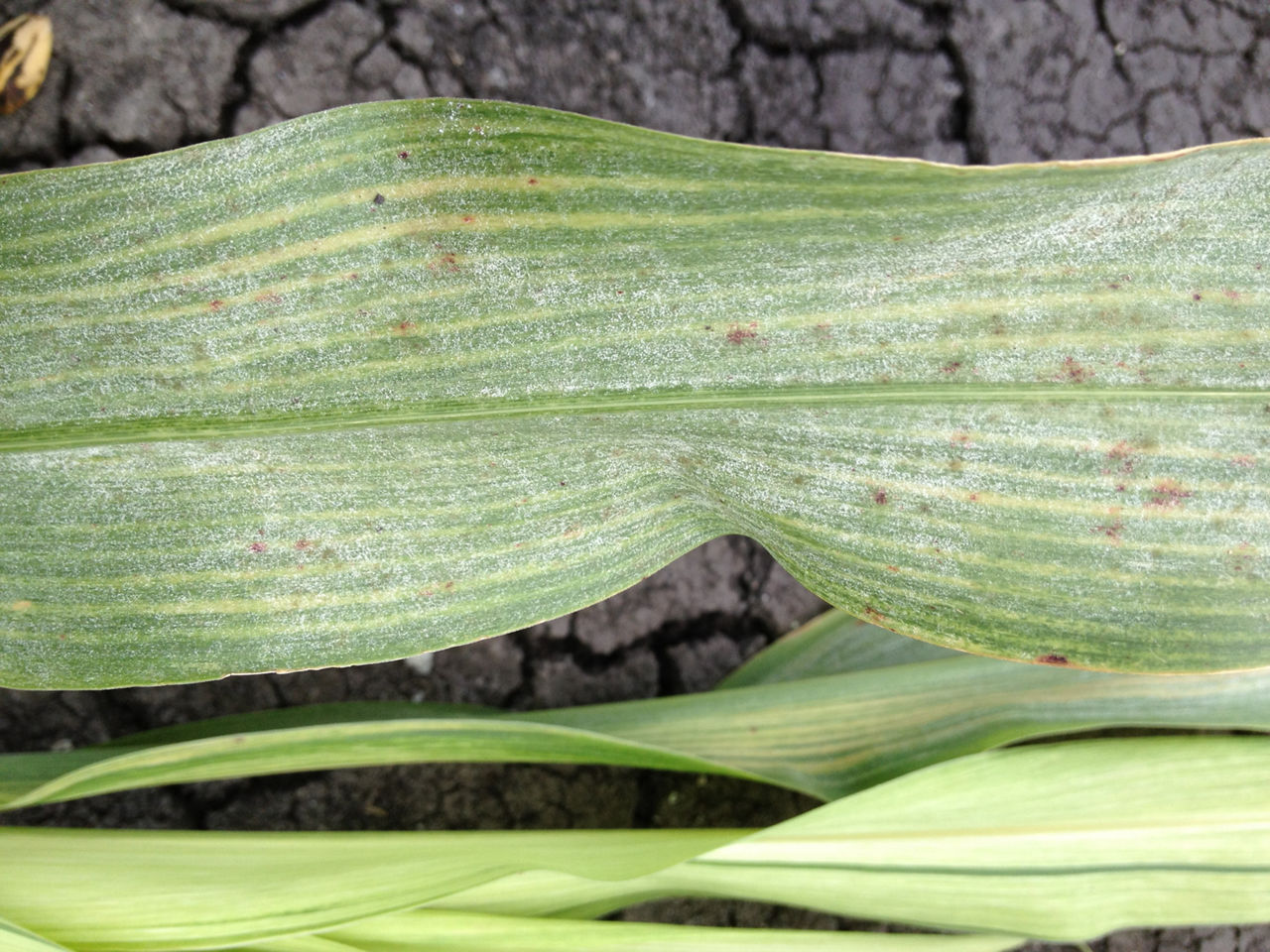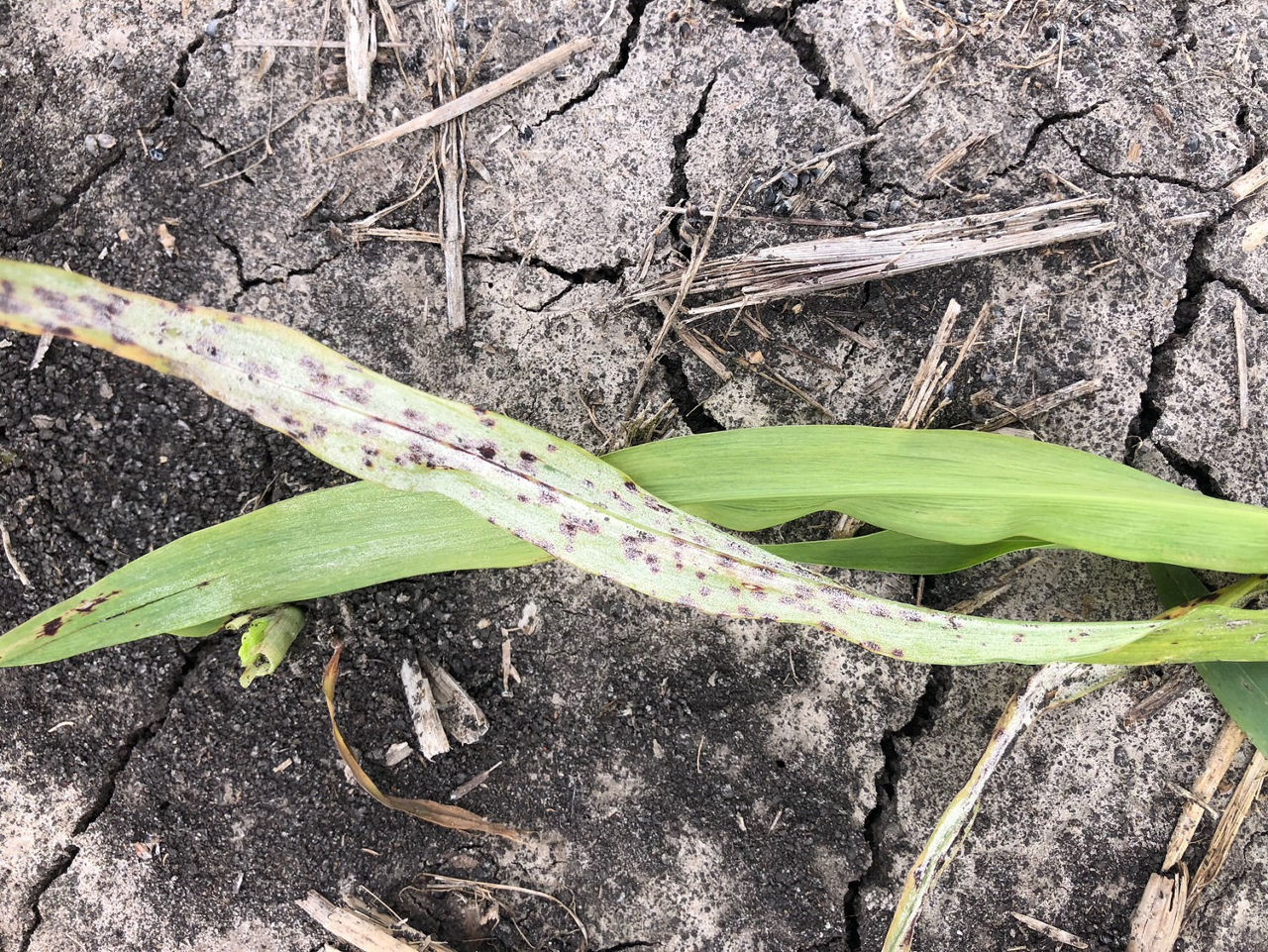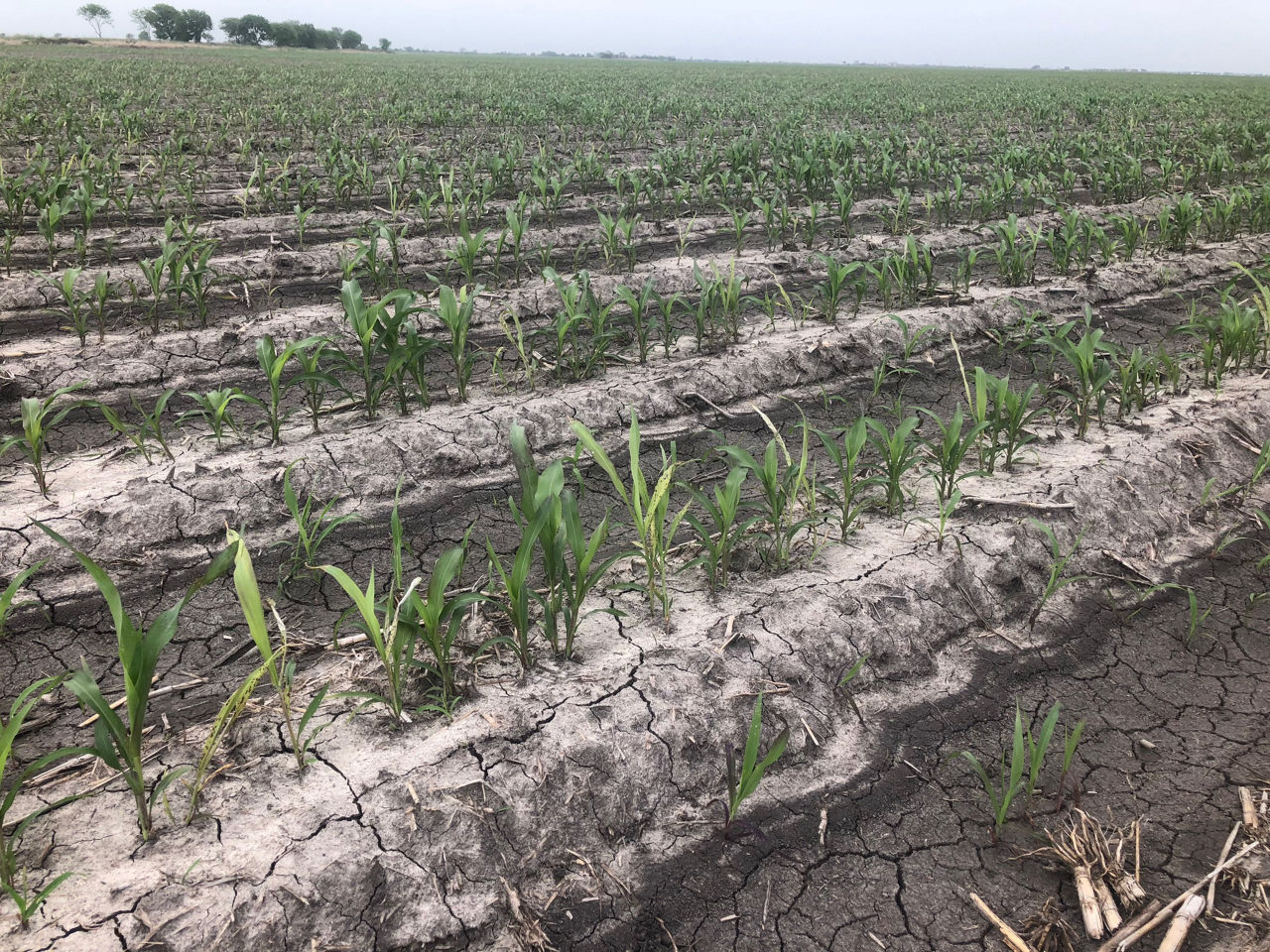5 MIN READ
Sorghum Downy Mildew
June 14, 2021
KEY POINTS
Most often occurs in the Upper Gulf Coast of Texas but has been found in other sorghum growing regions.
Outbreaks of sorghum downy mildew (SDM) in Texas have been associated with metalaxyl-resistant strains of the fungus and the use of susceptible grain sorghum products.
Managing this disease and maximizing yield potential requires an integrated strategy.
Life Cycle and Symptomology 1,2,3
Dispersal of the oospores by people or animals can occur by soil adhering to feet or implements and by movement of infected host plant material. Infection can occur systemically when oospores germinate and penetrate the roots, which in most cases can be extremely impactful on yield potential as systemically infected plants usually do not produce grain. Infected seedlings (Figure 1.) are pale yellow or have light-colored striping or mottling on the leaves.

Figure 1. Systemically infected plant with striped leaves and downy growth on underside of leaves.
Infected plants can be stunted and may die prematurely. As infected plants continue to grow, new leaves emerge with white parallel stripes of varying width, alternating with green tissue. The white-striped areas eventually turn brown and disintegrate, which results in a shredded appearance that may look like hail injury. Systemically infected plants, under cool, wet, or humid conditions can produce spores (conidia) that can be wind-blown to other plants or fields. The lesions (Figure 2.) produced on the leaf are brown and rectangular. While the lesions look concerning, the impact on yield potential is little, if any, and do not produce oospores.n.

Figure 2. Localized lesions caused by SDM.
Under early season, cool and wet growing conditions, susceptible sorghum products can be infected by conidia which can cause a systemic infection that can impact yield potential.
Infected plants (Figure 3.) are usually scattered throughout a field but may occasionally occur in localized clumps.

Figure 3. Infected plants scattered throughout a field.
Generally, yield loss does not occur until 20 to 30% or more of the plants in a field are infected. Below this point some yield compensation occurs in non-infected plants due to the thinning of the overall plant population. There can be greater yield loss from areas of the field where numerous infected plants are found together.
Management2
Cropping System
Outbreaks have often been associated with continued annual production of sorghum in the same field. The annual monoculture can result in a buildup of oospores in the soil, which can result in a severe disease outbreak under the right environmental conditions. If SDM is observed in the field, rotate away from sorghum for at least two years. Additionally, control of alterative hosts, primarily Johnsongrass, is necessary to maximize the effectiveness of a rotation program. Corn can also be infected by SDM; however, little to no oospores are produced.
Sorghum Product Selection
If SDM occurs in a field, the strain or pathotype of the fungus should be identified to help with selecting a sorghum product with adequate resistance or tolerance. Local university extension agents can help provide instructions for identifying the SDM pathotype. Pathotypes 3 and 6 occur in the Upper Gulf Coast with pathotype 3 being more common.
Seed Treatments
The increased occurrence of SDM has been associated with metalaxyl-resistance in both pathotypes 3 and 6 of P. sorghi. Unfortunately, there are no effective seed treatment fungicides to take the place of metalaxyl. In fields where SDM has not been identified, seed treatments containing metalaxyl should be used as a preventative measure. Fields with metalaxyl-resistant strains of SDM should still be planted with treated seed as they may also contain a strain of the pathogen that is not resistant to metalaxyl. However, farmers should keep in mind that SDM may have the ability to overcome the metalaxy if the other strain is predominating.
Final Thoughts
Scout fields early for evidence of SDM when plants are seedlings, three to four weeks after planting. Later in the season, diseased and stunted plants may be hidden by healthy plants and easily overlooked. If SDM is identified, consider your management options going forward and arrange for pathotype testing to help with grain sorghum selection in the future. While SDM is an important factor to consider when selecting sorghum products, keep in mind that disease incidence can be sporadic and is dependent to a great degree on environmental conditions.
Sources:
1 Isakeit, T. 2015. Scouting for sorghum downy mildew. Texas A&M AgriLife Extension. https://agrilife.org/texasrowcrops/2015/05/04scouting-for-sorghum-downy-mildew/
2 Isakeit, T. Sorghum Downy Mildew. Pest Management News. Vol.8, Issue 6. May 11, 2012. AgriLife Extension Service. The Texas A&M University System.
3 CABI. 2019. Peronosclerospora sorghi (sorghum downy mildew). Invasive Species Compendium. https://www.cabi.org/isc/datasheet/44643
https://agrilife.org/texasrowcrops/2015/05/04/scouting-for-sorghum-downy-mildew/
4035_S1